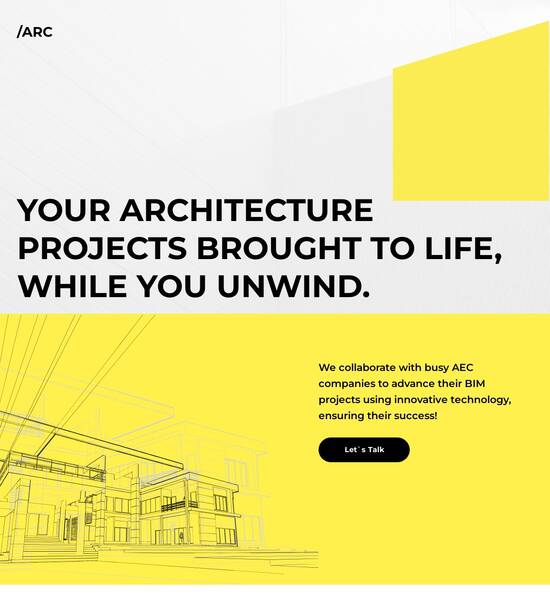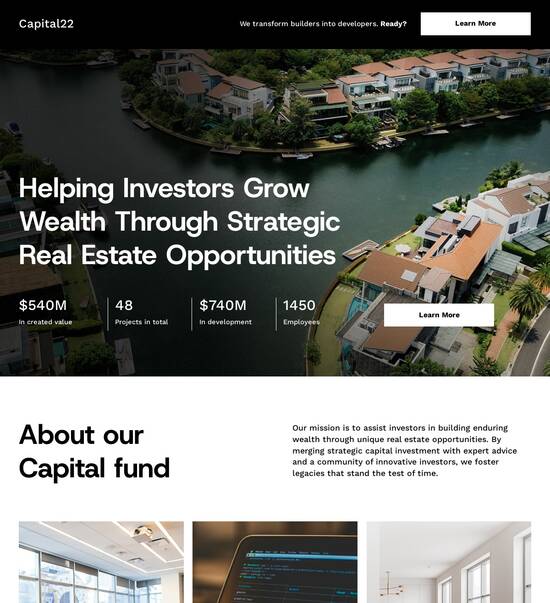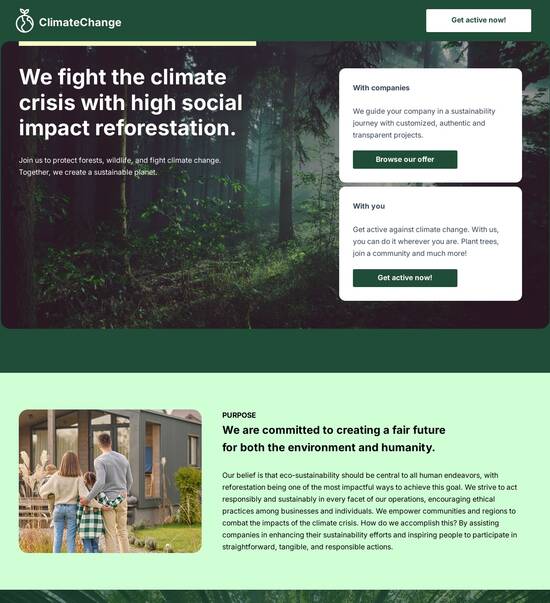
HTML/CSS optimized shipping page template
Explore Similar TemplatesAbout template
Supercharge your shipping page with HTML/CSS for outstanding performance! Learn more today.
Recommended templates

Easy to build without coding
With the intuitive drag-and-drop builder, anyone on your team can create high-converting pages without any knowledge of code or design. Make enhancements to your landing page with custom widgets using Javascript, HTML/CSS, or third-party scripts.

Multiple layouts for any industry and goal
Select from 500+ landing page layouts built to boost conversions across industry-specific scenarios. Customize them by adjusting fonts, adding images, and generating on-brand content with the AI assistant. Quickly scale with Instablocks® and Global Blocks that you can save, reuse, and update globally.

Loads fast and looks polished on any device
Every template is responsive, which means they present professionally on any device and load blazingly fast with our Thor Render Engine. You can also power them up with Google AMP technology to deliver an unparalleled mobile experience and drive higher conversions.

Robust analytics & experimentation
Get real-time updates and reporting across all your devices, showing the number of visitors, conversions, cost-per-visitor, and cost-per-lead. Launch AI-powered experiments, run A/B tests, and use heatmaps to analyze user behavior, then optimize your landing page to maximize conversions.







Easy to build without coding
With the intuitive drag-and-drop builder, anyone on your team can create high-converting pages without any knowledge of code or design. Make enhancements to your landing page with custom widgets using Javascript, HTML/CSS, or third-party scripts.
Multiple layouts for any industry and goal
Select from 500+ landing page layouts built to boost conversions across industry-specific scenarios. Customize them by adjusting fonts, adding images, and generating on-brand content with the AI assistant. Quickly scale with Instablocks® and Global Blocks that you can save, reuse, and update globally.
Loads fast and looks polished on any device
Every template is responsive, which means they present professionally on any device and load blazingly fast with our Thor Render Engine.
Robust analytics & experimentation
Get real-time updates and reporting across all your devices, showing the number of visitors, conversions, cost-per-visitor, and cost-per-lead. Launch AI-powered experiments, run A/B tests, and use heatmaps to analyze user behavior, then optimize your landing page to maximize conversions.
All the features you need to build lead-generating landing pages
Explore more featuresLearn how to build top-performing landing pages for any goal
FAQs
Leading the way in building high-performing landing pages





A guide to maximizing your landing page effectiveness with Instapage
Effective landing pages are crucial for successful digital marketing campaigns. Instapage provides a robust platform tailored to empower marketers by streamlining the landing page creation process, optimizing conversion rates, and ultimately increasing ROI. In this guide, we'll break down a series of steps to leverage Instapage's capabilities fully and craft high-converting landing pages that resonate with your audience.
Step 1: Choosing the right template for your campaign
The foundation of a successful landing page lies in selecting the right template. Instapage offers over 100 high-converting templates designed for various industries, enabling you to kickstart your efforts without starting from scratch. Leveraging these templates can save time, reduce friction, and instantly align your pages with best practices for conversion optimization.
- High-converting design: Templates are built on proven frameworks, ensuring that your page is visually appealing and drives action.
- Customizable elements: Each template allows for easy modifications, helping you tailor the content and design to reflect your brand.
- Lead generation components: Embedded lead capture forms can quickly gather visitor information, converting casual browsers into leads.
Step 2: Optimizing for conversions with advanced features
Once your template is chosen, it’s time to optimize for conversions. Instapage's built-in optimization tools, such as A/B testing and heatmaps, can provide insights into user behavior on your pages, allowing you to make informed decisions about what changes might lead to higher conversion rates.
- A/B testing: Experiment with different versions of your landing page to see which elements perform better with your visitors.
- Heatmapping: Visualize where users click, scroll, and spend time on your page to understand their journey more fully.
- Analytics dashboard: Track performance metrics in real time and iterate based on data-driven insights.
Step 3: Personalizing content for your audience
Personalization is a key factor in increasing engagement and conversion rates. With Instapage, you can employ dynamic text replacement and align your ads with specific landing pages to create unique experiences for different audience segments.
- Dynamic content: Automatically tailor messaging based on the user’s source, ensuring relevance and higher engagement rates.
- AdMap integration: Connect specific ads to dedicated landing pages, ensuring a cohesive message that follows users through their journey.
- Performance tracking: Use detailed audience metrics to analyze how different segments interact with your landing pages and adjust your strategies accordingly.
By following these steps to select the right templates, optimize for conversions, and personalize content, your landing pages will be better equipped to drive success.
Engage your audience with high-quality, customized landing pages that enhance your marketing efforts. Utilize the power of Instapage to transform your digital marketing strategy today.
Ready to take your landing page strategy to the next level? Start your free trial with Instapage and unlock the potential of your marketing campaigns.
HTML/CSS Optimized Shipping Page Template: A Comprehensive Guide
Understanding the importance of an optimized shipping page template
The shipping page plays a pivotal role in the world of e-commerce, functioning as a crucial point in the customer's journey from selecting products to completing their purchase. A well-designed shipping page can significantly impact conversion rates, helping businesses to secure sales and foster customer trust. When customers land on the shipping information section after browsing, they are looking for clarity and reassurance about their purchase.
Key features that customers expect include transparency about shipping costs, estimated delivery times, and available shipping methods. It's essential that these elements are presented clearly. Furthermore, an optimized shipping page not only reduces friction during the checkout process but also enhances overall satisfaction, contributing to repeat business and positive reviews.
Improved conversion rates as customers understand the full cost of their purchase upfront.
Increased customer satisfaction through transparency in shipping logistics.
Better trust with customers, as they recognize a straightforward and user-friendly experience.
Core features of an HTML/CSS optimized shipping page template
Creating an HTML/CSS optimized shipping page template requires focusing on several core features that cater to user experience, particularly in this ever-growing mobile-shopping environment. To start with, responsive design is paramount. With an increasing number of shoppers using mobile devices, it is vital that your shipping page adapts seamlessly to various screen sizes. Following best practices ensures that the layout remains visually appealing and functional, regardless of the device used.
Next, user interface (UI) considerations rise to the forefront. Streamlined navigation and clear calls to action make it easier for customers to engage with shipping options. Visual elements should not only be enticing but also functional, guiding users toward the information they need. Equally important is the presentation of shipping information. A breakdown of costs, timelines, and available shipping options should be easy to understand, emphasizing transparency which is crucial for fostering trust.
Responsive Design for All Devices: Ensures excellent performance across mobile and desktop.
User Interface (UI) Considerations: Streamlined processes to enhance usability.
Clear Shipping Information Presentation: Transparent costs and timelines.
Incorporating Trust Signals: Utilizing reviews and security badges to establish credibility.
Anatomy of a high-performing shipping page template
A high-performing shipping page template is thoughtfully structured to enhance user interaction. The header section should include branding elements, allowing customers to quickly identify the company behind the services. Additionally, integrating quick access navigation to customer service ensures that users can seek assistance if needed, minimizing frustration. This foundational layout sets the tone for the rest of the page.
Moving to the main content area, it's vital to include a shipping rates and timelines comparison. Highlighting geographic coverage and service limitations in an organized manner can alleviate customer concerns about their specific needs. Callout sections are ideal for showcasing special services like express shipping or any ongoing promotions, driving home the potential benefits for the shopper. Finally, the footer should contain quick links to important policies, such as returns and refunds, as well as contact information for logistics inquiries.
Header Section: Branding elements and customer service access.
Main Content Area: Shipping rates comparison and service limitations.
Callout Sections: Highlighting express shipping or promotions.
Footer Elements: Quick links to policies and contact information.
Innovative coding techniques for HTML/CSS shipping pages
Developing an optimized shipping page in HTML/CSS begins with an understanding of essential HTML tags that improve the functionality and accessibility of the template. Tags such as , , , and facilitate clear content delineation, making it easier for search engines to index the page effectively. Employing CSS smartly allows for visually appealing layouts, ensuring users experience engaging interactions.
When creating responsive layouts, utilizing CSS Flexbox and Grid can markedly improve your design flexibility. These robust frameworks allow designers to create responsive grids and layouts that adapt to the user’s screen size seamlessly. It’s also necessary to prioritize clean, efficient code. This includes keeping styles separate from content, which increases maintainability and loading speeds, significantly impacting user experience.
Essential HTML Tags: Use semantic tags for better accessibility.
CSS for Layouts: Create visually engaging layouts focused on user engagement.
Efficient Code Maintenance: Clean code enhances loading speeds and maintainability.
CSS Flexbox and Grid: Adapt layouts dynamically and responsively.
Real-world applications: Templates in logistics and shipping companies
The effectiveness of optimized shipping templates can be seen through various successful case studies within the logistics and shipping industry. For instance, companies that utilize well-structured templates report higher customer engagement rates and improved trust. Employing features such as clear navigation, trustworthy shipping information, and responsive layouts leads to a more gratifying user experience, ultimately translating into repeat business.
Through analysis, businesses find that features of an optimized shipping template—such as easy-to-read shipping timelines and accessible customer service—significantly increase sales conversion rates. By streamlining the information and payment process, companies have successfully minimized cart abandonment and maximized profit margins, solidifying the connection between user-friendly design and revenue growth.
Successful Case Studies: Examples of top logistics companies employing optimized templates.
User-Friendly Designs: Links between design and customer trust.
Increased Sales Conversion: Analyzing the impact of features on sales.
Enhancing your business website development with template tools
When venturing into the creation of a shipping page template, it’s essential to evaluate platforms and their capabilities tailored to logistics and shipping industries. Various tools are available, some offering pre-designed templates that expedite the process significantly. By selecting the right template, businesses can ensure their pages align closely with their target audience’s needs, aiding in overall marketing objectives and web traffic.
A step-by-step guide can aid businesses in selecting a suitable shipping page template. Factors to consider include design flexibility, responsiveness, ease of integration, and ongoing support. While many may debate between ready-made templates and bespoke development, pre-designed options often provide immediate usability without the lengthy development time, allowing teams to focus on refinement and customization.
Evaluating Template Platforms: Discover capabilities that fit logistics needs.
Step-by-Step Guide: Choosing a shipping page template.
Ready-Made vs. Custom Development: Pros and cons of each option.
Testing and iterating: The importance of A/B testing on your template
Once you have your template in place, testing becomes an essential part of optimizing your shipping page. Defining key performance indicators (KPIs) is crucial for evaluating the effectiveness of the shipping page. Metrics such as bounce rates, time on page, and conversion rates give significant insights into how well the page performs. Identifying these parameters can help design a testing framework effectively.
Best practices for conducting A/B tests include having a clear hypothesis, testing one variable at a time, and ensuring that the sample size is representative. Real-life examples show how tweaking elements like button colors or the clarity of shipping information can significantly improve user interaction and increase sales conversions. Through testing, businesses can continually improve user experiences, ultimately driving higher engagements.
Defining KPIs: How to specify success criteria for shipping page performance.
Best Practices for A/B Testing: Strategies to ensure effective product testing.
Real-Life Examples: Successes from iterative testing on shipping pages.
Customer perspectives: Gathering feedback for continuous improvement
One of the most valuable resources for improving shipping pages is customer feedback. Understanding user experiences provides insights into areas of strength and weaknesses within the shipping page template. Gathering this input through surveys, feedback forms, and direct customer engagement helps to continually refine the user experience and can lead to actionable changes that enhance overall satisfaction.
Employing tools and methodologies to gather feedback, such as heat maps and usability testing, can further illuminate customer behaviors on the shipping page. This data can reveal navigational difficulties or confused user patterns. Incorporating this feedback effectively ensures that the shipping page is not just a static element but a continuously evolving asset tailored to meet customer needs.
Importance of Customer Input: To optimize shipping page effectiveness.
Tools and Methodologies: Gathering feedback from users.
Incorporating Feedback: Adjusting templates based on customer insight.
Demo pages: Showcasing the power of optimized shipping page templates
Demo pages for optimized shipping templates are invaluable in demonstrating their potential effectiveness. Highlighting examples of established shipping page demos can guide businesses in visualizing the various elements that make up an extraordinary user experience. A well-constructed demo offers insights into the design process, allowing for an interactive exploration of layout and content.
Exploring interactive elements showcased in demo pages helps engage potential customers. By illustrating various shipping scenarios through these templates, users can more effectively envision their journey, inspiring confidence in the service. Demos not only educate but also stimulate interest in adopting optimized shipping page solutions that enhance customer experience.
Showcasing Successful Demos: Examples of optimized shipping pages.
Exploring Interactive Elements: Engaging users through demo experiences.
Encouraging Visualization: Assisting users in understanding their shipping journey.
The future of shipping page templates: Trends and innovations
As technology continues to evolve, so do customer expectations with respect to shipping templates. Future innovations in logistics technology are expected to foster an increase in personalized shipping experiences, allowing customers to customize deliveries based on preferences. Expectations for real-time tracking and more efficient communication throughout the shipping process truly present a frontier ripe with opportunities.
Predicting future developments in HTML/CSS templates suggests that automation and AI may play significant roles, adapting user interactions based on past behaviors. Companies that remain proactive with these changes, embracing user-centered design and intuitive UX, will remain competitive in a rapidly changing landscape, ensuring they meet both current and future consumer demands.
Evolving Logistics Technology: How innovations will shape shipping expectations.
Future Developments in HTML/CSS: The integrating role of automation and AI.
Staying Competitive: Strategies for adapting to changing consumer demands.
Final insights: Leveraging templates for enhanced customer engagement
In conclusion, investing in HTML/CSS optimized shipping page templates holds transformative potential for businesses aiming to enhance customer engagement. By prioritizing user experience, transparency, and trust, these templates can effectively boost conversion and create a customer-centric approach to logistics. A streamlined design can significantly positively influence customer perceptions, fostering trust and loyalty that translates to repeat business.
Companies that embrace an ongoing commitment to template iteration, guided by customer feedback and data-driven insights, will find their shipping pages evolving in tandem with their audience's needs. In a competitive landscape, the right shipping solutions can pave the way for greater customer loyalty and increased revenue, affirming the undeniable value of strategic web design.
Transformative Potential: The influence of optimized templates on engagement.
Commitment to Iteration: How ongoing improvements matter.
Strategic Web Design: Essential for fostering trust and loyalty.
Ready to skyrocket conversions?
Supercharge your ad campaigns with high-performing landing pages
Get started














